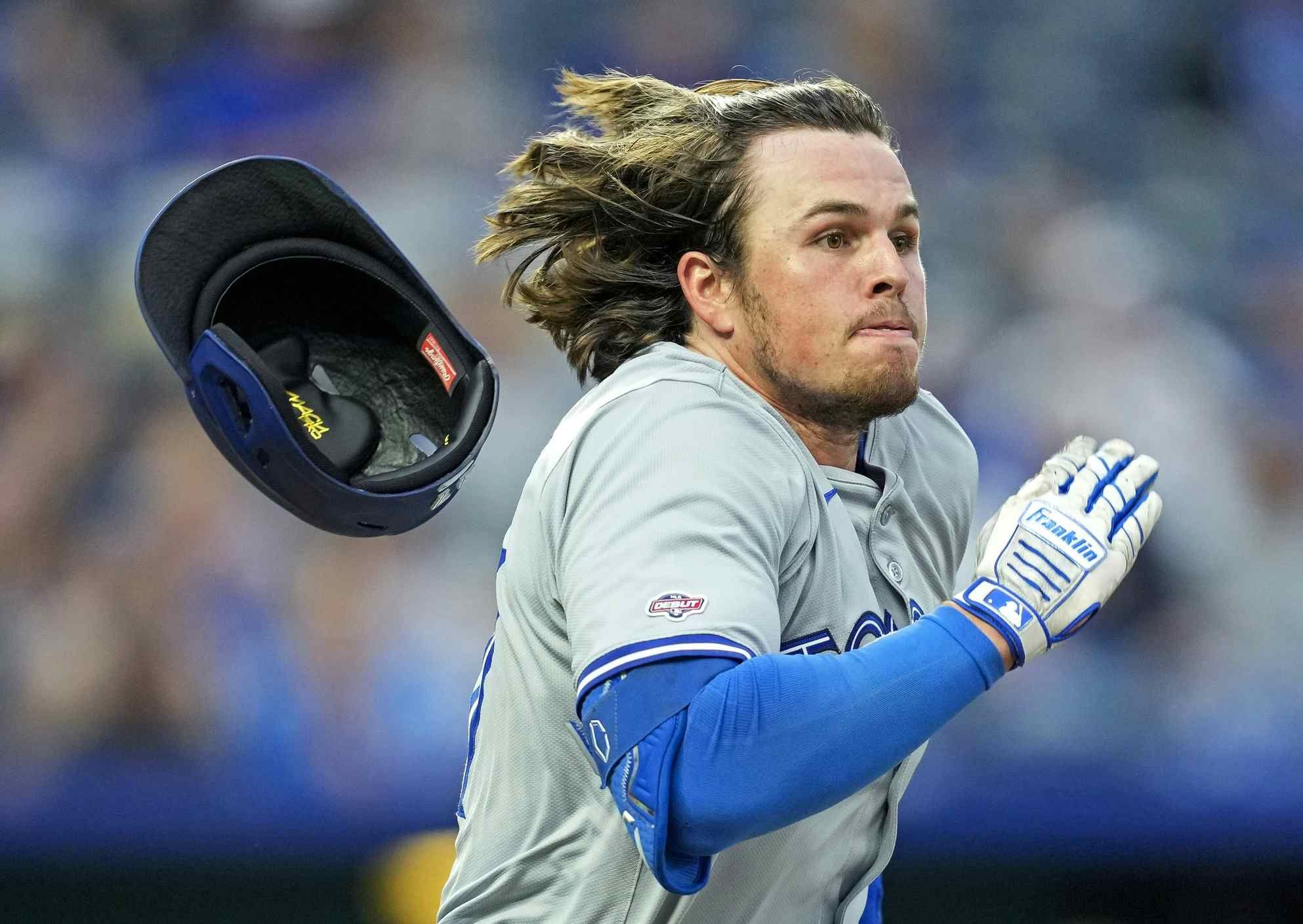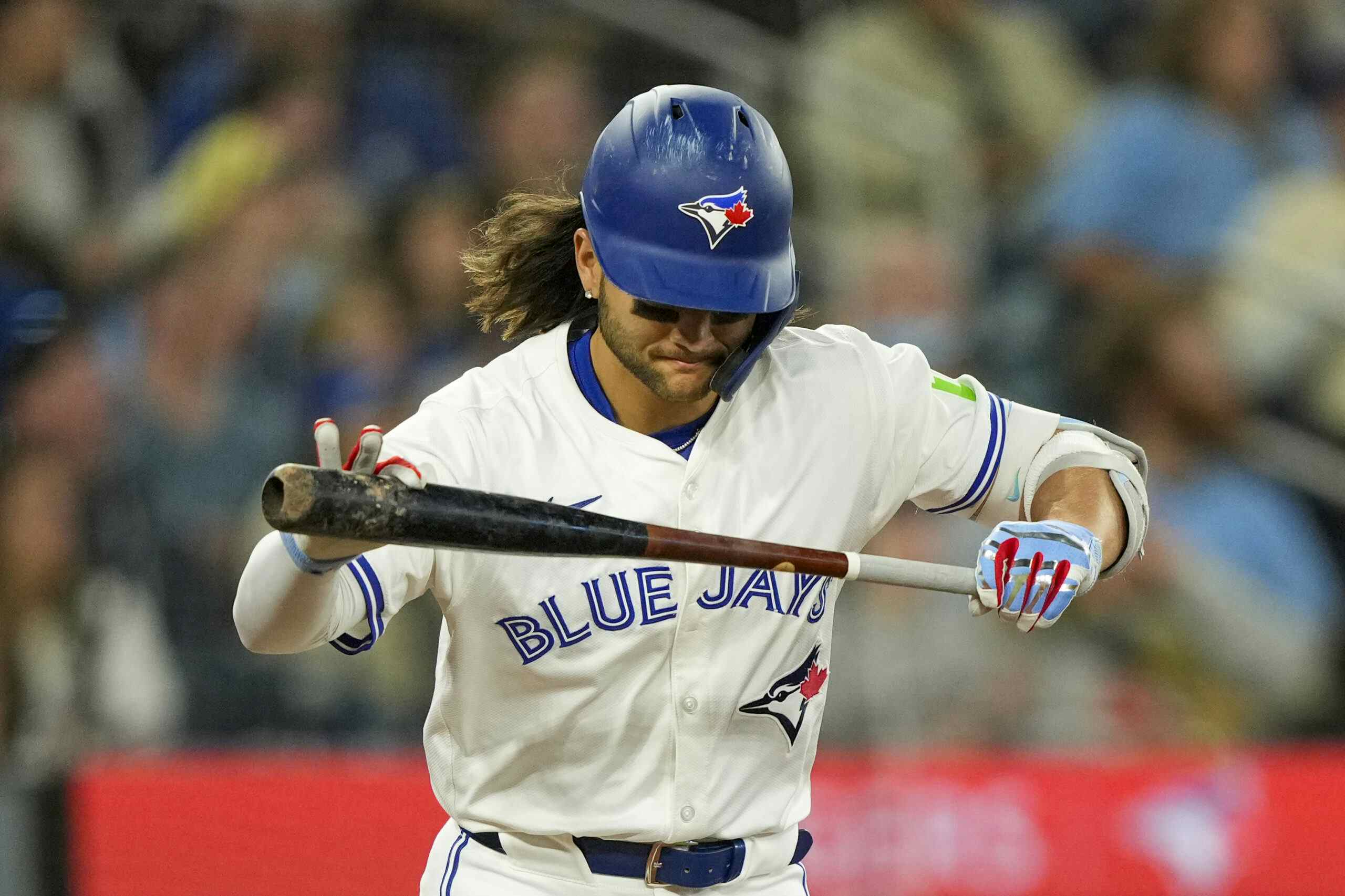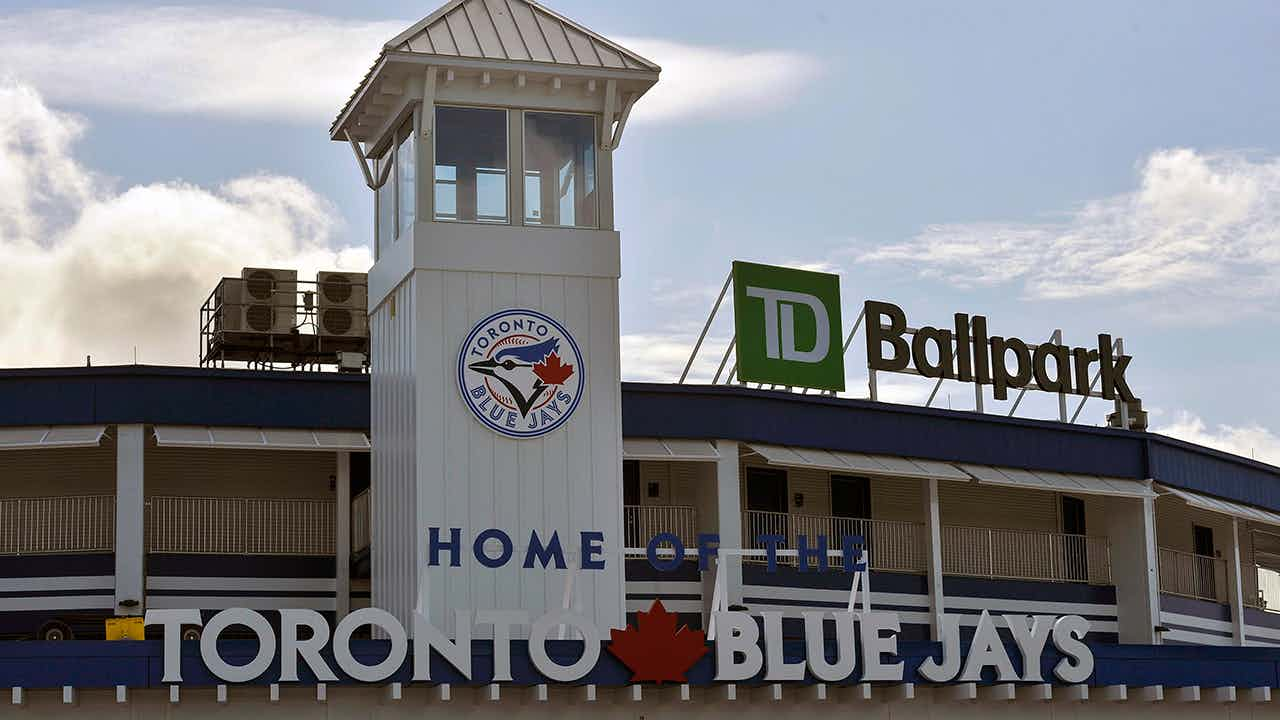Let’s Talk About Rowdy Tellez

Rowdy Tellez!
What a name! What a bat! What a prospect! What a debut for the Buffalo Bisons on Saturday!
Let me be clear: I’d love to see young Rowdy hit his way onto the Toronto Blue Jays and have a successful big league career as an everyday player. I would! That would be great!
But as easy as it is to get excited about a ready-made slugger who could fill a glaring hole in the Blue Jays’ lineup, and as much as I’d mostly rather not be the guy pissing on the parade, we’d probably do well to consider a few things before jumping on the hype train.
Everything we’ve heard out of the Blue Jays organization about this prospect has been incredibly positive. In Montreal, John Gibbons praised the youngster’s impressive spring. After his two-dong Bisons debut, their manager, Bobby Meacham, had nothing but positives for a kid he thinks is just scratching the surface of his potential. We’ve heard the story of Tellez taking six pages of notes after a dinner with Troy Tulowitzki, a story in which Mark Shapiro claimed it wasn’t an isolated incident, praising Rowdy’s work ethic and willingness to learn — a not-uncommon theme when it comes to Tellez.
Indeed, since turning pro, Rowdy clearly has worked hard to reshape his body, and according to everything you’ll read he’s made big strides as a defensive player. That’s a huge credit to him, and a huge positive going forward.
Those outside the organization, however, have been much less glowing about him. Part of that is that first base prospects have it tough — unlike shortstops and centre fielders, who can be shifted around the diamond to best accommodate their skillset and the needs of their club, there are only so many spots for a first base prospect to play, and the offensive threshold is high (uh… usually) — and part of it is, I’m sorry to say, that there are legitimate and serious questions about him.
It’s hard to reconcile the notion that fans (and some media) seem to have, that he’s an impact bat waiting to happen, with the fact that, in a middling Jays system, he’s the number five prospect for MLB.com, number six for Baseball America, number eight for both Baseball Prospectus and FanGraphs, and number nine for Keith Law.
On every list Tellez is behind Richard Urena, who FanGraphs’ Eric Longenhagen says he thinks can be a “fringe to average everyday player” with poor on-base skills, as long as he stays at shortstop. On most lists Tellez is behind Conner Greene, who has big velocity but posted some thoroughly uninspiring walk and strikeout totals across two levels in 2016 (51 K and 38 BB in 77.2 IP at High-A Dunedin, and 48 K and 33 BB in 68.2 IP at Double-A New Hampshire).
Those numbers alone hardly make Greene a non-prospect, just as being ranked low hardly makes Tellez one. In fact, there are scouts who, like the Jays (at least publicly), are pretty high on the kid. He mostly slips in these rankings because he’s so polarizing — some see what the Jays say they see, and some don’t.
Law calls him “a poor defender at first who gets beat by good velocity and pitchers who can locate off-speed stuff. His stats point to a big league regular, but it’s misleading because of the park and the lower caliber of competition.”
Longenhagen has some positives, noting that “he’s got pretty good timing, his feel for airborne opposite-field contact (on the ground, he’s pull-only and is going to be shifted) is solid, he’s shown an ability to take a walk throughout his career, and has the raw power necessary to torch out mistakes.” But he also talks about “visual red flags” and “quad-A traits” after laying this on us:
Tellez gets beat by velocity, up. His hands go back high and, sometimes, late, making it hard for him to catch fastballs and make meaningful contact or sometimes any at all.In the Fall League, when Tellez would find himself in fastball counts, his hands quieted down and everything would trigger earlier, giving him a chance to get his bat in the zone on time. Some scouts might say Tellez is “cheating on the fastball”, making a predetermined guess about what’s headed his way and adjusting his swing accordingly, something that’s difficult to sustain in the big leagues, where a higher concentration of pitchers can throw whatever pitch they want, whenever they want. Others would just say Tellez is “smart” for letting the situation dictate his behavior at the plate.It also takes Tellez’s bat a while to get into the hitting zone and, while he has shown some feel for making opposite-field contact when his barrel doesn’t arrive in time to pull the ball, he hits the ball on the ground quite a bit. MLBfarm has his 2016 fly-ball rate at 29% (league average is 35%) and, while there are exceptions (Paul Goldschmidt and Corey Seager are both down there) the 28-30% fly-ball range isn’t exactly full of players who hit for the kind of power needed to profile at first base.
Jays Journal caught that Kevin Barker spoke to Jeff Blair about Rowdy on the Fan 590 last week, bringing up similar concerns. They explain that Barker noted that “Tellez has a tendency for opposite field power, which is obviously not a bad thing, but if you’re not able to hit pull side homers, especially as a projected lefty power bat, you’re not ready for the show [note: uh… Tellez can hit pull side homers]. Barker followed that up though by saying essentially that the issue was nothing that couldn’t be corrected on the farm after a campaign, or less.”
It’s not all bad, in other words.
I’m not sure if these issues are as easily correctable as Barker suggests. Then again, I’m not even sure that they’re necessarily issues. Maybe Tellez has enough raw power in his bat to get away with staying the kind of hitter that he is.
But this is where we get to his debut and the two home runs. The first one was an opposite field number on a 3-1 pitch, and I’m honestly not sure whether we should be excited that he can hit monster shots to left-centre or wondering if that’s a good outcome on a swing that was maybe a little late — and so maybe even a bad sign, rather than a good one. Especially since it was apparently a fastball.
(You can see the video here. Seems I can’t embed it.)
I’m not necessarily trying to be negative here, I’m just following some of the negative scouting comments and seeing how they fit with what happened on the field.
The pitcher, Johnny Barbato, had apparently been sitting 94, which is about right where he was last year when he made 13 appearances out of the Yankees bullpen. That’s big league velocity, but not exceptional big league velocity. Tellez will see a lot of 94 at the next level. He was in a fastball count, so likely “cheating” if he’s still taking the same approach as in fall league. And yet he still didn’t manage to pull it.
I’m not sayin’, I’m just sayin’.
It’s just one plate appearance. It was a great outcome for Tellez and the Bisons. And yet it maybe makes you wonder.
Tellez’s second blast was pulled, and a damn rocket, on a first pitch fastball that was not exactly well located and looks preeeeeetty flat to me. This, again, is me maybe trying a little too hard to be negative — and don’t get me wrong, he sure turned on it. It’s just, as much as we may want to view these blasts as vindication for those who think the doubters are going to be dead wrong, and as much as it’s certainly going to look good on the stat sheet, context matters — something that becomes obvious when you look at the right field porch in the park where he put up such great numbers last year in Double-A, too.
Last year Tellez hit a very nice .275/.358/.477 on the road, but a monstrous .319/.417/.583 at home. One of those numbers might say big league ready, but the other doesn’t, and the context of the ballpark makes it obvious which one is the safer bet. We need to put his Triple-A successes in context, too. At least until there are clearer signs that the scouts who worry about his ability to handle velocity and better quality pitching are wrong.
Is that a weird and negative take on the fact that Tellez just hit a pair of home runs off a guy who can bring 94 or 95 mile per hour heat? Maybe. But maybe not. And I’d argue certainly not, given the number of fans who are already ready to rush him to the big leagues, expecting that right now he’s going to be able to hit better than Justin Smoak. It would be nice, but I’m not buying it. Yet.

Recent articles from Andrew Stoeten





